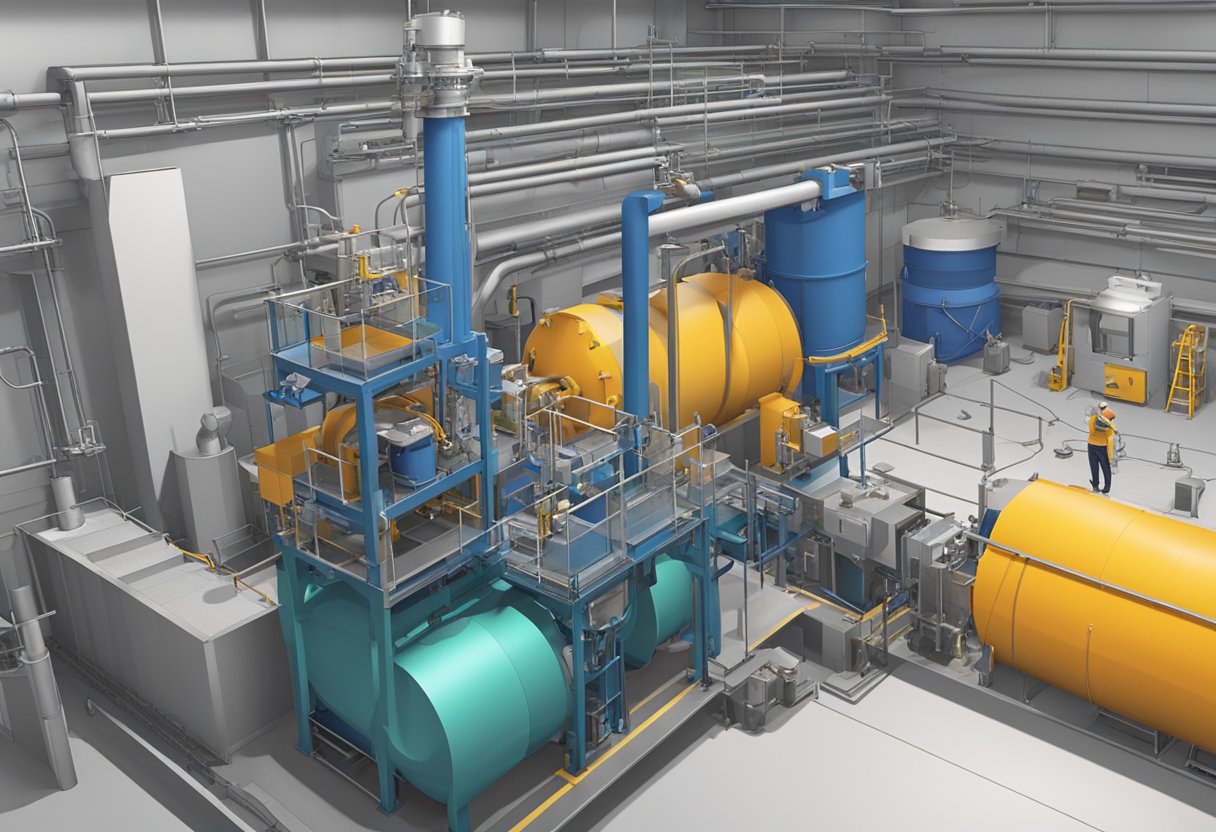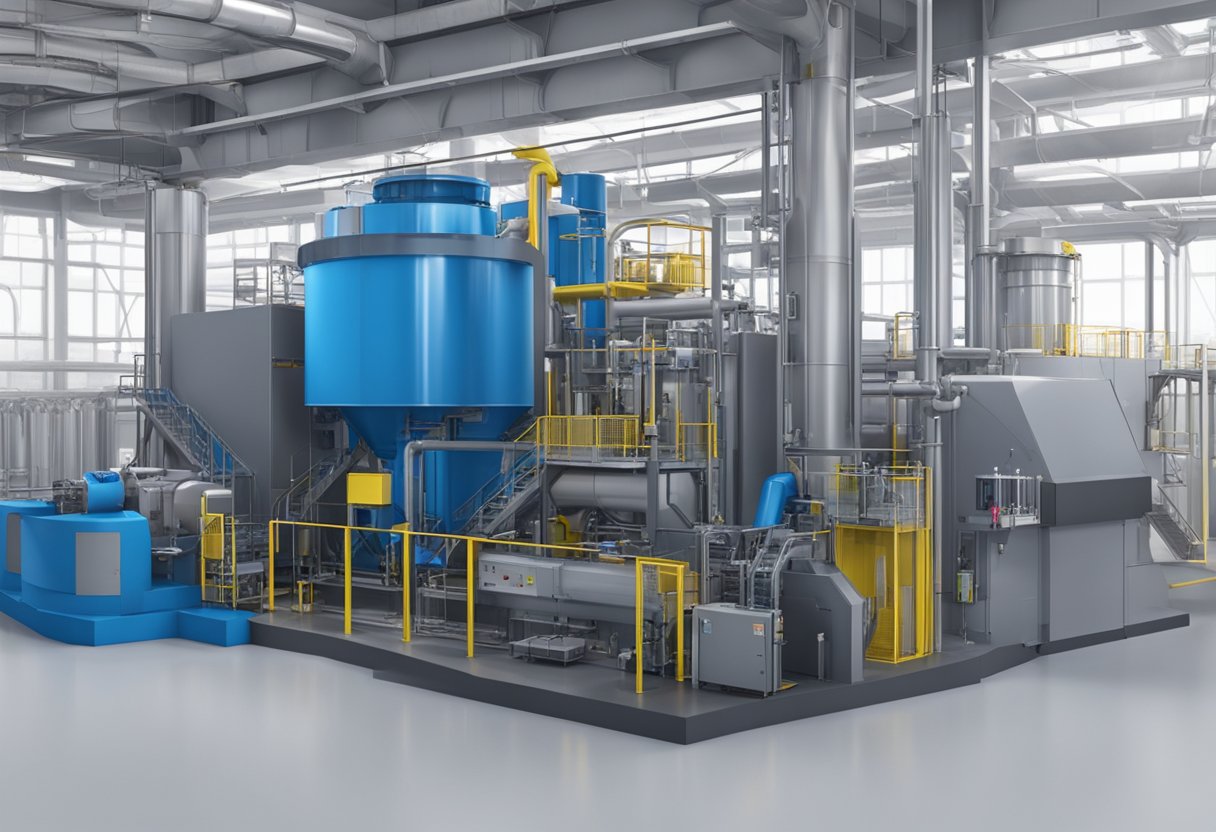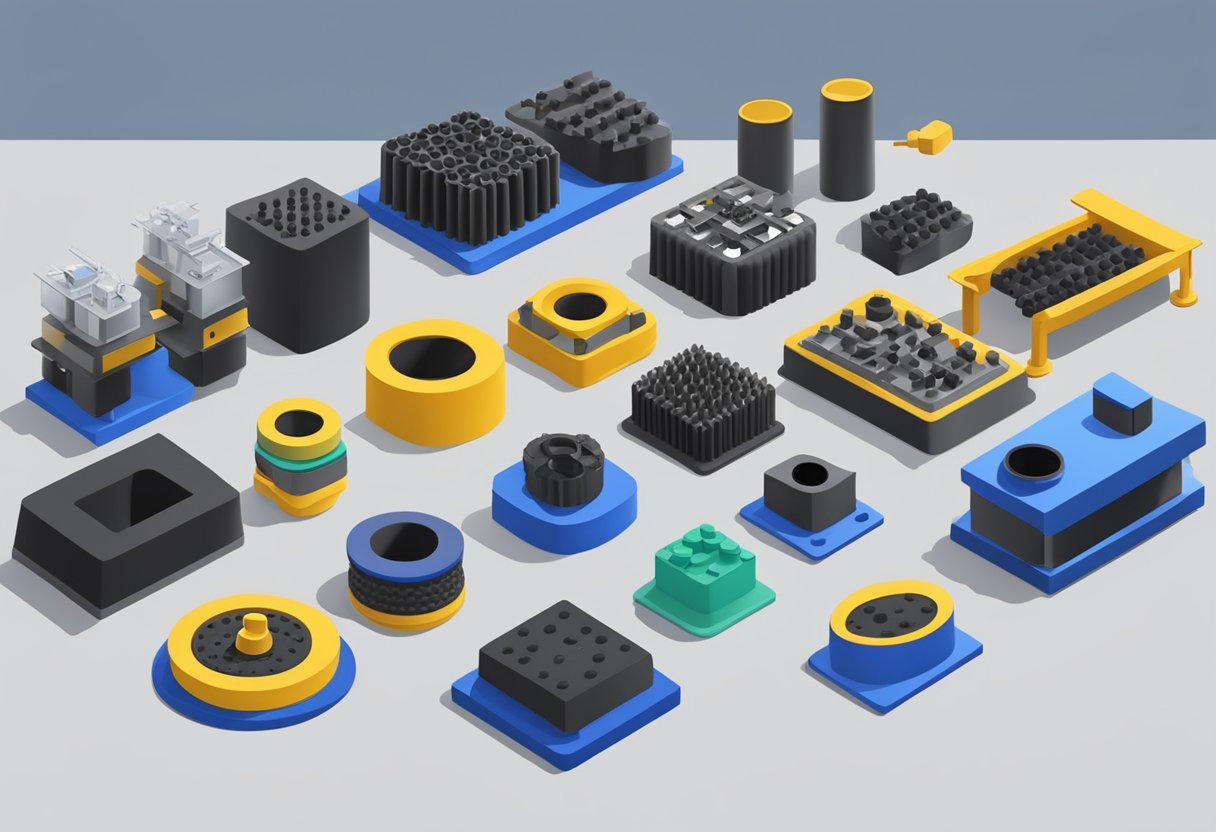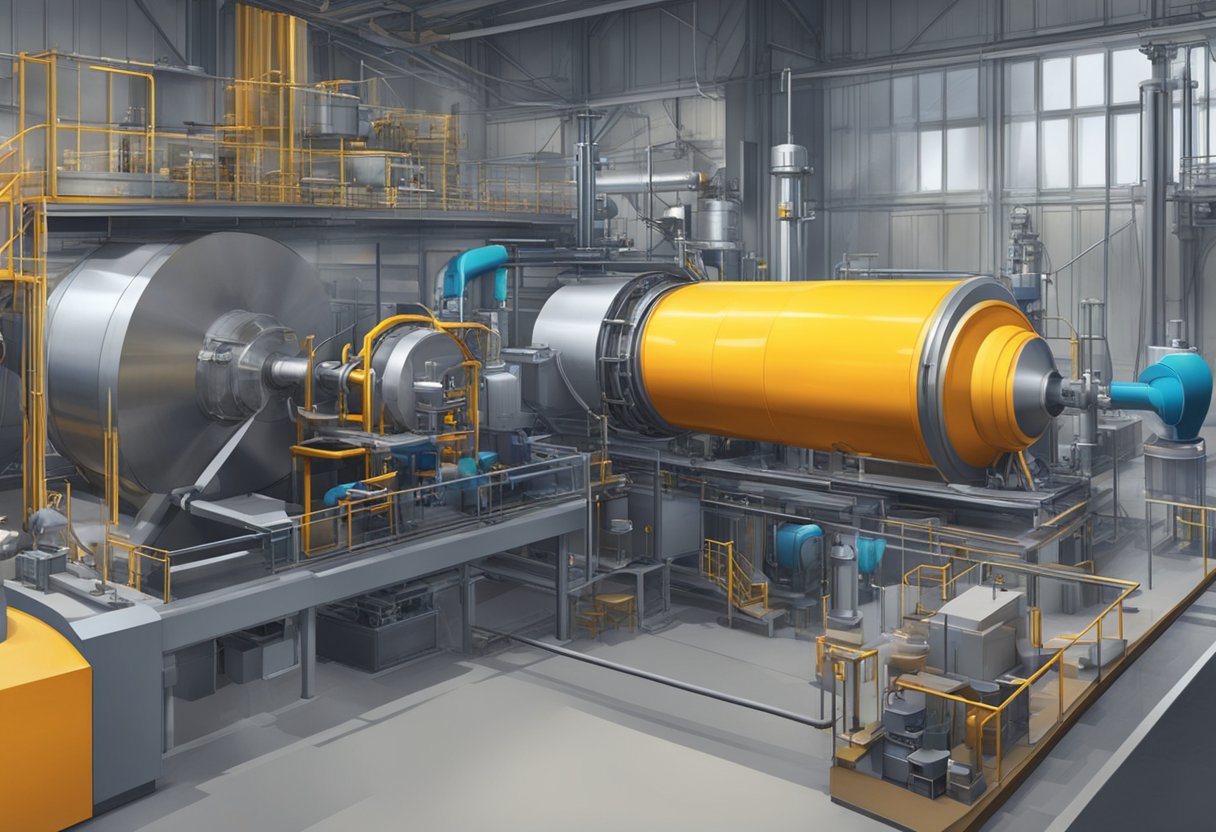Accelerator for Rubber Vulcanization: Benefits and Uses
19/01/2024
Rubber vulcanization is a process that involves the cross-linking of rubber molecules to improve its strength, elasticity and durability. It is a critical step in the production of various rubber products, including tires, hoses, and seals. Accelerators are essential components in the vulcanization process as they speed up the reaction rate, reduce processing time, and improve the quality of the final product.

An accelerator for rubber vulcanization is a chemical compound that enhances the vulcanization process by increasing the efficiency of the chemical reaction. These compounds are typically added to the rubber compound before curing, and they work by increasing the temperature at which the reaction takes place. This, in turn, speeds up the reaction rate and reduces the curing time required to achieve the desired properties. There are several types of accelerators available, each with its own unique properties and advantages.
Fundamentals of Rubber Vulcanization

Rubber vulcanization is a process that transforms natural or synthetic rubber into a more durable and stable material. This process involves the use of accelerators, which are chemical compounds that speed up the reaction between rubber and sulfur.
The vulcanization process is essential for the production of high-quality rubber products, as it improves the mechanical properties of rubber, such as its strength, elasticity, and resistance to heat, chemicals, and weathering.
The vulcanization process consists of several steps, including mixing the rubber compound with sulfur and other additives, shaping the rubber product, and heating it to a specific temperature and pressure. During this process, the sulfur reacts with the rubber molecules, forming cross-links that create a three-dimensional network structure.
Accelerators play a critical role in the vulcanization process, as they enhance the rate of the reaction between rubber and sulfur. The most commonly used accelerators are organic compounds containing nitrogen, such as mercaptobenzothiazole (MBT), thiurams, and dithiocarbamates.
The choice of accelerator depends on the type of rubber, the curing conditions, and the desired properties of the final product. It is essential to use the right type and amount of accelerator to ensure proper vulcanization and avoid overcuring or undercuring, which can lead to defects and reduced performance of the rubber product.
Overall, understanding the fundamentals of rubber vulcanization and the role of accelerators is crucial for the production of high-quality rubber products with optimal mechanical properties and durability.
Types of Accelerators for Rubber Vulcanization

Accelerators are substances that are added to rubber compounds to speed up the vulcanization process. There are several types of accelerators used in rubber vulcanization, each with its own unique properties and benefits.
Sulfenamide Accelerators
Sulfenamide accelerators are a type of accelerator that is commonly used in the vulcanization of natural rubber and synthetic rubber compounds. These accelerators are known for their ability to improve the tensile strength and elongation at break of the rubber compound. They are also effective at reducing the scorch time of the rubber compound, which is the time it takes for the rubber to start curing at high temperatures.
Thiazole Accelerators
Thiazole accelerators are another type of accelerator that is commonly used in rubber vulcanization. These accelerators are known for their ability to improve the aging properties of the rubber compound, as well as their ability to improve the resistance to heat and chemicals. Thiazole accelerators are often used in the production of tires, where they help to improve the durability and performance of the tire.
Guanidine Accelerators
Guanidine accelerators are a type of accelerator that is known for their ability to improve the modulus and hardness of the rubber compound. They are often used in the production of rubber products that require high levels of stiffness and resistance to deformation. Guanidine accelerators are also effective at reducing the cure time of the rubber compound, which can help to improve the efficiency of the vulcanization process.
Thiuram Accelerators
Thiuram accelerators are a type of accelerator that is commonly used in the production of rubber products that require high levels of durability and resistance to wear. These accelerators are known for their ability to improve the tear strength and abrasion resistance of the rubber compound. Thiuram accelerators are often used in the production of conveyor belts, hoses, and other rubber products that are exposed to high levels of wear and tear.
There are several types of accelerators used in rubber vulcanization, each with its own unique properties and benefits. By understanding the different types of accelerators available, manufacturers can choose the best accelerator for their specific application, and produce high-quality rubber products that meet the needs of their customers.
Mechanism of Accelerated Vulcanization

Accelerated vulcanization is a widely used process in the rubber industry to speed up the crosslinking reaction between sulfur and rubber molecules. The mechanism of accelerated vulcanization involves the use of accelerators that facilitate the formation of sulfur crosslinks. This section discusses the two main mechanisms of accelerated vulcanization: activation of sulfur crosslinking and interaction with polymer chains.
Activation of Sulfur Crosslinking
Accelerators work by activating the sulfur crosslinking process. During vulcanization, sulfur molecules react with rubber molecules to form crosslinks, which give rubber its strength and elasticity. Accelerators facilitate this process by breaking down the sulfur molecules into smaller, more reactive units. This increases the number of active sites available for crosslinking, which speeds up the vulcanization process.
There are several types of accelerators that can activate sulfur crosslinking, including thiazoles, sulfenamides, and thiurams. Thiazoles are the most commonly used accelerators and are known for their fast curing speed and good scorch resistance. Sulfenamides are slower curing and have better aging properties, while thiurams are used for their good crosslinking efficiency.
Interaction with Polymer Chains
Accelerators can also interact with polymer chains to facilitate crosslinking. During vulcanization, accelerators can form chemical bonds with rubber molecules, which can increase the number of crosslinks and improve the strength and durability of the rubber. This interaction can also improve the dispersion of sulfur in the rubber matrix, which can lead to more uniform crosslinking and better mechanical properties.
The interaction between accelerators and polymer chains can be affected by several factors, including the type of accelerator, the type of rubber, and the curing conditions. For example, some accelerators may have better interaction with certain types of rubber, while others may be more effective at higher curing temperatures. Understanding these factors is important for optimizing the vulcanization process and achieving the desired properties in the final product.
The mechanism of accelerated vulcanization involves the use of accelerators to facilitate the formation of sulfur crosslinks. Accelerators can activate sulfur crosslinking and interact with polymer chains to improve the strength and durability of the rubber. Understanding the mechanisms of accelerated vulcanization is important for optimizing the vulcanization process and achieving the desired properties in the final product.
Optimizing Accelerator Systems
In rubber vulcanization, accelerator systems are crucial in speeding up the process and improving the quality of the final product. However, not all accelerator systems are created equal. Optimizing accelerator systems can significantly improve the efficiency and effectiveness of rubber vulcanization.
Binary Accelerator Systems
Binary accelerator systems consist of two accelerators that work together to achieve optimal vulcanization. The combination of a primary accelerator and a secondary accelerator can provide a more balanced and controlled vulcanization process. The primary accelerator is responsible for initiating the vulcanization reaction, while the secondary accelerator enhances the reaction and improves the final properties of the rubber.
The choice of primary and secondary accelerators depends on the type of rubber being vulcanized and the desired properties of the final product. For example, a popular primary accelerator for natural rubber is mercaptobenzothiazole (MBT), while a common secondary accelerator is diphenylguanidine (DPG). However, different combinations of primary and secondary accelerators can be used to achieve different results.
Synergistic Effects
Synergistic effects occur when two or more accelerators work together to achieve a more significant effect than they would individually. This effect improves the vulcanization process and the final properties of the rubber. Synergistic effects can be achieved by combining accelerators that have different modes of action or different vulcanization temperatures.
For example, combining a primary accelerator that works at lower temperatures with a secondary accelerator that works at higher temperatures can improve the overall vulcanization process. The primary accelerator initiates the reaction at lower temperatures, while the secondary accelerator enhances the reaction at higher temperatures.
Optimizing accelerator systems is crucial in rubber vulcanization. Binary accelerator systems and synergistic effects can significantly improve the efficiency and effectiveness of the vulcanization process. The choice of accelerators and their combination depends on the type of rubber being vulcanized and the desired properties of the final product.
Processing and Safety Considerations
Scorch Safety
Accelerators are essential for rubber vulcanization, but they can be hazardous if not handled properly. One of the main safety concerns is scorching, which occurs when the rubber compound starts to cure prematurely before it reaches the mold. This can lead to uneven curing, poor physical properties, and wasted materials.
To avoid scorching, it is important to choose the right accelerator and dosage for the specific rubber compound. The curing temperature and time should also be carefully controlled. It is recommended to use a scorch retarder in the compound to delay the onset of curing and improve the processing safety.
Dispersion in the Rubber Matrix
Another important consideration when using accelerators is the dispersion of the additive in the rubber matrix. Poor dispersion can lead to inconsistent curing and reduced physical properties. It is important to ensure that the accelerator is well-dispersed in the rubber compound before vulcanization.
One way to improve dispersion is to use a masterbatch, which is a pre-dispersed form of the accelerator in a carrier resin. This can help to achieve better dispersion and reduce processing time. It is also important to choose the right mixing equipment and process parameters to ensure uniform dispersion throughout the rubber compound.
Overall, processing and safety considerations are critical when using accelerators for rubber vulcanization. By carefully selecting the right accelerator, dosage, and processing parameters, and ensuring proper dispersion, manufacturers can achieve consistent curing and high-quality rubber products while minimizing safety risks.
Environmental and Health Impacts
Nitrosamine Concerns
Accelerators are essential in the vulcanization process of rubber, but they can also cause environmental and health concerns. One of the most significant concerns is the formation of nitrosamines during the vulcanization process. Nitrosamines are carcinogenic and can cause cancer in humans. Nitrosamines can form from the reaction between accelerators and other compounds present in rubber, such as amines.
Several studies have shown that nitrosamines are present in rubber products, including tires, gloves, and other rubber items. The concentration of nitrosamines in these products varies, and some products may contain higher levels than others. The exposure to nitrosamines can occur through inhalation, ingestion, or skin contact.
Regulatory Aspects
In response to the concerns about the health effects of nitrosamines, regulatory agencies have established limits for the concentration of nitrosamines in rubber products. For example, the European Union has set a limit of 10 µg/kg for nitrosamines in rubber products intended for young children. The United States has also established limits for nitrosamines in rubber products.
Manufacturers of rubber products are required to test their products for the presence of nitrosamines and ensure that the concentration is below the established limits. They may use alternative accelerators that do not form nitrosamines or modify the vulcanization process to reduce the formation of nitrosamines.
Overall, the use of accelerators in rubber vulcanization can have environmental and health impacts, particularly in the formation of nitrosamines. However, regulatory measures have been put in place to limit the concentration of nitrosamines in rubber products, and manufacturers are taking steps to reduce the formation of nitrosamines during the vulcanization process.
Innovations in Accelerators
Sustainable Accelerator Alternatives
In recent years, there has been a growing concern about the environmental impact of traditional rubber vulcanization accelerators. As a result, researchers have been developing sustainable accelerator alternatives that are eco-friendly and do not compromise the quality of the final product. One such alternative is the use of natural rubber-based accelerators, which are derived from renewable sources and have shown promising results in terms of efficiency and performance. Another sustainable accelerator alternative is the use of metal oxide nanoparticles, which have been found to enhance the vulcanization process while reducing the amount of accelerator needed.
High-Performance Accelerators
High-performance accelerators are designed to improve the efficiency and speed of the vulcanization process. One such accelerator is the use of thiuram-based accelerators, which are known for their fast curing rate and high scorch safety. Another high-performance accelerator is the use of guanidine-based accelerators, which are known for their excellent heat resistance and low compression set. These accelerators are particularly useful in the production of high-performance rubber products such as tires and conveyor belts.
Overall, the development of sustainable accelerator alternatives and high-performance accelerators is an exciting area of research in the rubber vulcanization industry. As more and more companies prioritize sustainability and efficiency, it is likely that we will see an increase in the use of these innovative accelerators in the years to come.
Market Trends and Future Outlook
The accelerator for rubber vulcanization market has been experiencing steady growth in recent years. This growth is expected to continue in the near future, driven by the increasing demand for rubber products in various industries such as automotive, construction, and healthcare.
One of the major trends in the market is the development of eco-friendly accelerators. With the growing concern over environmental issues, manufacturers are focusing on producing accelerators that have minimal impact on the environment. This has led to the development of accelerators that are free from harmful chemicals such as nitrosamines and benzothiazoles.
Another trend in the market is the increasing use of accelerators in the healthcare industry. Accelerators are used in the production of medical gloves, catheters, and other rubber-based medical devices. With the growing demand for healthcare products, the demand for accelerators in this industry is expected to increase significantly in the coming years.
The Asia-Pacific region is expected to dominate the accelerator for rubber vulcanization market in the future. The region has a large number of rubber manufacturers and the demand for rubber products is increasing rapidly due to the growth of various industries in the region. China, India, and Japan are the major markets in the region.
Overall, the accelerator for rubber vulcanization market is expected to grow at a steady rate in the coming years. The development of eco-friendly accelerators and the increasing use of accelerators in the healthcare industry are expected to drive the growth of the market. The Asia-Pacific region is expected to dominate the market due to the presence of a large number of rubber manufacturers and the growing demand for rubber products in various industries.




